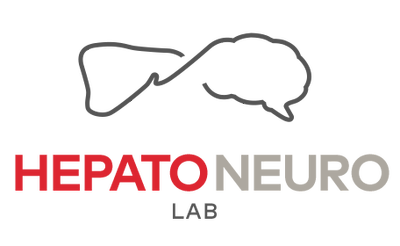

Liposome-Supported Peritoneal Dialysis in the Treatment of Severe Hyperammonemia.
Valentina Agostoni, Vincent Forster, Cristina Bosoi, Mélanie Tremblay, Christopher Rose, Jean-Christophe Leroux.
Purpose: Hyperammonemia (HA) is a clinical condition characterized by toxic increases in systemic ammonia levels predominantly resulting from inherited or acquired impairments in hepatic detoxification (e.g. cirrhosis). If not treated, HA can lead to irreversible brain damages and death in severe cases. The poor prognosis associated to this condition reflects the still unmet clinical need for a safe, fast, and efficient ammonia-removal therapy. Hemodialysis, the current standard of care for treating severe HA, suffers indeed some major drawbacks as it is technically difficult to implement, not readily available in hospitals and highly risky for some patients (e.g., newborns and patients suffering from hemodynamic instability). Peritoneal dialysis (PD) may represent a valuable therapeutic alternative as it is a less invasive procedure since it uses the peritoneum as a semipermeable filter and the peritoneal cavity as a dialysis chamber. However, its clinical application is limited by its lower clearance capacity compared with hemodialysis. To address this problem, we report herein a novel dialysis fluid based on transmembrane pH-gradient liposomes (acidic core) that efficiently scavenge the excess of ammonia from the body. The ammonia-removal efficacy of this system was assessed in a rat model of cirrhosis induced by bile duct ligation. The cirrhotic rats develop hyperammonemia, and consequently brain edema. Methods: Liposome-supplemented peritoneal dialysis (LSPD) fluids (350 mOsm/L, pH 6.5), were prepared by sequentially mixing sterile liposomes aqueous suspensions, obtained by film hydration method, with a hypertonic acidic citrate buffer (pH 2) and an isotonic xylitol-based basic solution (pH 12.4). The first step allowed the encapsulation of an acidic medium in the vesicles core by means of an osmotic shock; the second established the transmembrane pH-gradient. Dose-response studies were first performed in healthy Sprague-Dawley rats by injecting LSPD fluids (60 mL/kg) with increasing liposome concentrations (4, 8 and 16 mM) in the peritoneal space, and evaluating their ammonia extraction efficiency over 4 h of dialysis. Efficacy studies were then performed in a rat model of secondary biliary cirrhosis induced by bile duct ligation. Control normal rats (SHAM) underwent a sham operation. Five weeks after the surgery, two different groups of cirrhotic rats (LSPD and PD) received 4 consecutive PDs performed every other day with LSPD or a conventional glucose-based PD solution (injected dose = 50 mL/kg). One group (positive control) did not receive any treatment. At the end of the study, the brain edema was assessed by measuring the brain water content in the frontal cortex by densitometry method. The ammonia concentration in dialysate and plasma samples was determined by enzymatic method using a commercial kit. Results: LSPD was shown to efficiently scavenge ammonia in the peritoneal space of healthy rats in a dose-dependent manner. The extracted ammonia levels progressively increased over time reaching a concentration of 0.48 ± 0.05 mM, 1.25 ± 0.2 mM and 1.72 ± 0.24 mM in fluids supplemented with liposomes 4, 8 and 16 mM, respectively. In light of these results, the LSPD fluid 8 mM, which exhibited a good ammonia uptake, was tested in a cirrhotic rat model. Compared to the control PD solution, the liposomal formulation showed an enhanced ammonia extraction capability. At the end of each dialysis session, the ammonia concentrations in the liposome-supplemented dialysate exceeded those obtained with the control solution by 7-fold. Importantly, this improved ammonia clearance led to a significant attenuation of the brain edema. Indeed after four consecutive LSPDs, the brain water content of cirrhotic rats was significantly decreased and reverted to normal levels. On the contrary, no significant reduction was observed with the control solution. Plasma ammonia levels were also found to significantly decrease after treatment with LSPD fluid but not with the control PD solution. Conclusion: These findings demonstrate that LSPD is a promising strategy to improve the clearance capacity of PD towards ammonia, and pave the way for a less invasive, safe and efficient approach for treating severe HA. Financial support from the Swiss Commission for Technology and Innovation (17525.1 PFLS-LS) is acknowledged.



